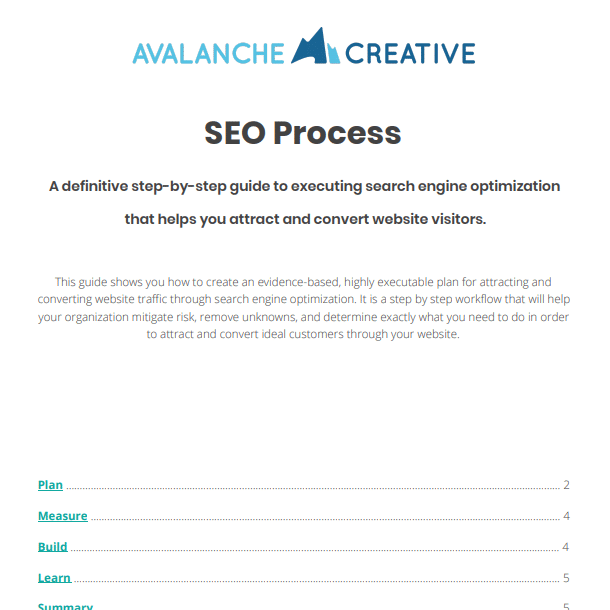On-Page vs. Off-Page SEO
Category: Search Engine Optimization | Tags: Backlinks, SEO, google my business, guide, strategy
When you think of SEO techniques, on-page SEO is probably the first thing that comes to mind. However, there’s much more that goes on behind the scenes. While they are both equally important in creating high-ranking pages, there are several key differences between on-page and off-page SEO. If on-page SEO is a play’s script and performance, off-page SEO is the sound and lighting crew.
What Is The Difference Between On Page And Off Page?
What Is On-Page SEO?
On-page SEO focuses on elements on a website that can be optimized to rank against competitors in search engine results. Aspects such as keywords, HTML tags, page titles, and image descriptions all work together to determine your page’s SEO value, much like different ingredients work together to create the perfect cake.
On-page SEO may take a few months to perfect and work in full effect. Users won’t automatically flock to your optimized site once it’s published. What you’re doing is leaving them a trail of breadcrumbs that attracts more and more visitors as readers and search engines realize your page contains high-quality content worth reading. A lot of power is in your hands with on-page SEO; it’s up to you to create what the world wants to see.
What Is Off-Page SEO?
Off-page SEO techniques involve acquiring notoriety and reference from third-party sites or apps. This can include things like promoting your content on other platforms like Facebook and LinkedIn, reaching out to websites with broken reference links to offer a resource, and asking customers for reviews.
At a large SEO agency, different people may be performing on-page and off-page SEO tasks. It may be the job of one department to acquire backlinks, while another may conduct keyword research. For a company’s in-house SEO team and smaller agencies, however, one person or a handful of people are likely tackling the entire process.
On-Page SEO Checklist
Content
Content is the heart of all on-page SEO. After doing thorough keyword research, you need to write pieces that are engaging for the reader and contain your keywords sprinkled into the mix. Choose a main keyword that will be the focus of your content, and implement the others when applicable.
Metadata
Metadata optimizes how your website appears in search engines. Users need a good first impression when your page comes up as a result on Google. The meta title (blue clickable text), description, and slug all influence a page’s overall SEO value.
Image Alt Text
Image alt text not only helps with your page’s SEO but also serves as a tool for accessibility. Alt text is what screen readers read aloud to blind individuals or those who have difficulty with vision, so an accurate description of the picture is essential.
Captions, descriptions, and image titles also help with generating a higher ranking for your page. Using your keyword is a great way of letting search engine crawlers know your website is well put-together and relevant to your topic.
Mobile Optimization
No matter how good your content is, readers won’t want to stay on your website for long if it’s poorly designed. Quality website design doesn’t just stop at the desktop version. It needs to include optimization for a mobile view. With the majority of people visiting sites on mobile, mobile optimization is one of the most important on-page SEO factors.
Text on mobile should be decently sized and easy to read, with navigation that is clearly defined at the top of the page and images that don’t overlap. If you don’t know how to design for mobile, it’s best to find a professional agency that does.
Internal Links
There’s nothing wrong with a little self-promotion. Adding internal links to your content is a coy way of encouraging a user to stay on your site longer. The longer that users stay on your website, the more search engines will favor you. In addition to anchored text in your content, you can also add buttons at the top to a relevant page, include a “next post” feature, or implement a “related posts” section at the bottom.
Tags and Categories
Much like internal links, tags and categories can also provide a way to get readers to check out other parts of your site. They also keep your site’s collection of content organized and can be an extra place to include your keywords. Don’t just create nonsensical tags for an opportunity to use a keyword, however. Categories and tags should be utilized to create an effective content library.
Readability
Schema markups let search engine crawlers know what your page is trying to convey and what the nature of the content is. This form of microdata uses an algorithm to gather information from your site.
Making your website readable to these search engine crawlers by including neatly structured content is a way to improve your SEO value. You can’t just think like a reader; you have to think about what search engine crawlers can understand.
Off-Page SEO Checklist
Backlinks
Backlinks are links to your page that other websites include in their content. Content that is rich in information and statistics is more likely to be referenced by other websites. When a search engine notices that your page is frequently being linked to, it becomes more valuable in its eyes. Becoming a source of knowledge among other websites gives your company notoriety and exposure.
Google My Business
Google wants to promote Google Business Profiles, which were previously known (and famously known) as Google My Business profiles. As a result, having a profile makes you more likely to appear at the top of the page when a user searches for a relevant keyword. Ever notice that a section titled “Places” appears immediately upon searching a term like “car tires” or “hibachi grill”? This is Google’s way of making sure those who use their platform take priority.
Setting up a Google Business Profile account with information about your company, like an address, phone number, and website, will help your SEO value immensely. As an extra step, you can also add photos and regular posts.
Reviews
Having a lot of (positive) reviews is one of the easiest ways to rank highly in search engine results. Platforms like Yelp, Google Business Profile, and Facebook reviews can be amazing opportunities to boost your SEO ranking. There’s absolutely no shame in asking customers or clients for reviews. Without that little nudge, they may think about it but forget later. Many are happy to help a business if they were satisfied with their products or services.
Social Media Promotion
Social media marketing is its own beast. However, it can be used to promote new blog posts and website pages to a broader audience that typically doesn’t consume long-form content. Many members of the younger generation don’t rely on newsletters and emails for updates but on platforms like Twitter and Instagram.
Promoting the link to a new page on Twitter or posting it to your story reminds people to check out your content and brings more views to your website’s page. In addition, an active social media presence makes your company look more trustworthy to consumers. It’s a win-win.
Avalanche On- and Off-Page SEO Services
At Avalanche Creative, we have mastered the art of both on-page and off-page SEO techniques. Let’s organize a consultation to see how our SEO services can benefit your company and how your website could be performing better in search result rankings.
Share this article:
The Avalanche Email: Fun. Simple. Educational. No Selling.
Learn Result-focused SEO & Content
Join over 2,272+ others who get one email every Wednesday with simple instructions on how to get more website traffic and leads through SEO and content marketing. (Learn more about the email)
Keep Learning
How To Show Up in Gemini (And Win More Local Jobs)
Show up in Gemini when homeowners search for landscaping services. Build the right signals on Google and your website to win more qualified local jobs.
How to Run Google Ads for Landscapers: A Complete Guide
Learn how to set up Google Ads for landscapers, attract qualified leads, and win more local jobs with this step-by-step guide.
🏔️ Watering > Planting New Seeds
Your next marketing win may already be on your site. Learn how to optimize existing pages for better rankings, traffic, and results.
The Recipe vs. The Meal
Your customers buy the experience, not the product. Discover a simple way to shift your message from ingredients to the full meal.
🏔️ Hook, Line, and Sinker 🎣
Use this fishing framework to turn your posts into stories that capture attention, create tension, and inspire action from your audience.
🏔️ Avoid Everything That Doesn’t Move You Forward
Stop chasing shiny tools and refocus on what moves your marketing toward the end zone. Simple steps to cut noise and make steady progress.




